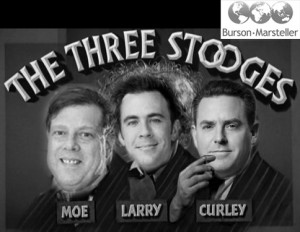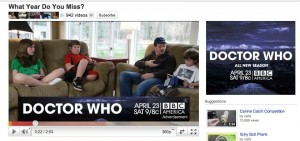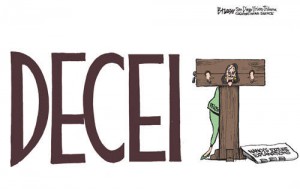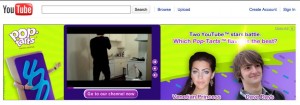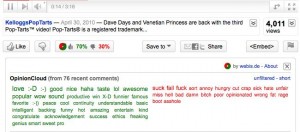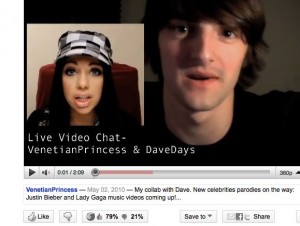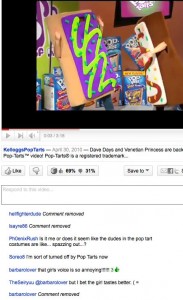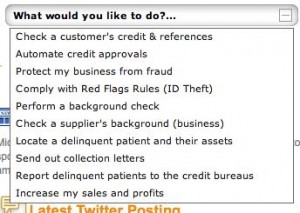Rapport-building anecdote to engage you: Around 1999, I worked as an account manager at a website-development company called Frontier Media Group. It was a company that specialized in production of online-properties and kiosks. My biggest client (which became the company’s second largest) began treating us like its “Internet Agency of Record,” and that took us far beyond project work. It was a vote of trust, and suddenly we were being asked to evaluate media buys and pilots. “What should the ratio of my Internet budget be in terms of web build versus online advertising?” they’d ask. I rushed back to the shop and pleaded my agency’s senior leadership to develop online media-buying services to handle display advertising and paid search… they resisted for more than a year, finally compelled less by duty and more by the incremental revenue it could snatch. “Hmmmm. A chance to snatch five percent of digital spending that was increasingly going online.” They hired a media guy whose job it was to battle offline media agencies who, of course, saw this internet-advertising fad as a horrific waste of money (which only coincidentally cannibalized their billings, but I digress).
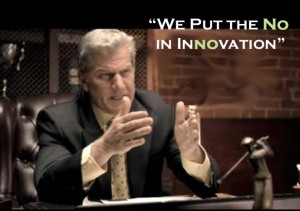
Now, a decade later, social media is facing a similar fate. As a marketer and independent consultant I see great opportunities that brands may not realize for years. As a former Internet agency guy, I understand why. It’s simply not yet profitable for an agency to engage in social media. Some account managers recommend social media, either because they know it’s in the brand’s best interest or they want to show they’re innovative. If the marketer appreciates the value, they’ll be heroes to the brand… even if they’re likely to be perceived as “going native” on their own agency. Why? Most savvy internet agencies haven’t figured out how to capitalize on emerging forms of social media, and urge clients to do things in their self interest. 
Interactive agencies — and their big ol’ parental full-service agencies, to which I shall refer as Big Agency — are typically made up of account teams, production people, planners, media buyers and creative. They shout “teamwork and synergy” when they pitch, and they despise each other secretly. Each of these silos has its hands full managing such mundane tasks as updating a website or doing insertion orders for a fat & juicy digital media spend. These tasks are profitable. The account team, often the only one who may directly benefit from a social-media pilot because they’ll look progressive to their client, have precious few resources to actually manage even a simple social-media campaign. Who at the agency has done a video contest, a YouTube promotion, a Facebook or Twitter campaign? Who can help substantiate much less manage something new? Oh- there’s someone who did it… but he’s busy with new-business pitch.

Meanwhile, Big Agency has very little incentive to partner with firms that specialize in social media (instead deferring to a full utilization of all agency personal before considering “outsourcing”). That’s consulting or agency-management 101… keep people “off the beach” even if their skills aren’t a good fit this particular decade. The specialist firms are, therefore, unable to get a seat at the table. “We don’t need them for that,” says the Big Agency chief creative officer or senior media buying executive. “We can do that ourselves!”
The result is that the “social media” campaigns are often a failure. And so, it seems, the medium is too. But to paraphrase British Author G.K. Chesterton (and Bruce Grant, who paraphrased him in his own way):
“Social media has not been tried and found wanting. It has been found difficult, and left untried.“
Examples:
- Bloated destinations on Facebook or Twitter that lack any relevant consumer engagement.
- Little appreciation for “earned” engagements (not paid) because media buyers aren’t media engagers. They’re buyers.
- Dismissive reactions to leveraging popular social-media “stars” because the agency sees that as a creative threat. The turtleneck-wearing, cigarette-holding creative director is insulted by letting their brand near an amateur YouTube star even if that chump has a bigger and more vibrant audience than will any professionally produced ad.
If an Internet firm or Big Agency can’t profit from social media (and sees it as a risk), how hard will they push it? Does an account guy want to take a risk for his client, only to be slapped around by 5 departments at his own employer? Will that Big Agency junior social-media advocate with skill and experience ever have an opportunity to help the agency, much less a client, tap the medium?
Meanwhile, the PR firms (who are instinctively appreciative of “earned” media that is so valuable in social media) are often not invited to contribute. These guys can’t spell HTML and didn’t have a Twitter account until it was all over the Wall Street Journal and NBC. If they do employ a social-media expert, the poor sap has the same fate that “web monkeys” held in PR and traditional agencies in 1999. They lack access to the clients, are not participating at a strategic level, and don’t even play nice in the agency sandbox.
This is a sad post, so let’s cheer it up and make it actionable. What can Big Agency (and even the nimbler ones) do to avoid these legitimate traps?

- 101 course for every department. Just like everyone at a traditional agency should have a basic understanding of the Internet, so too should they appreciate new forms of media. Not everyone needs to “tweet,” but they should be able to describe a successful case study related to each major media form (Twitter, Facebook, YouTube, Digg, and whatever else comes along). They may discover that “social media” can help their department instead of threaten its existence.
- Senior champion required. Every agency needs a senior advocate for these innovative new solutions that might otherwise die. His or her job should be to champion these and determine how the agency handles them. Should the media department handle social media, or does it fit better in the strategic, research, or planning group? I’ll give you a hint- this decision is the most vital.
- Take small innovation team off billable clock. Someone or a small group should be relieved of billable-hour pressure to identify emerging models — some that may not yet have a profit model, but can help a client’s business. This person or team should share best practices, and know what firms, vendors, consultants solve various problems. In some cases, they can simply educate account teams and connect them with these experts. But if it’s a first-attempt at what may be a high-maintenance project, this team might “run point” to manage the initiative from setting goals to collecting metrics. In many cases, it should educate account teams (and not just those pitching a new assignment), hand the project over, and return to collect the performance… ensuring it’s not redundant to other departments. Some of this work may have already been done on billable time, but if it’s buried in an account team it’s not going to help the new pitch or other client.
- Mutual profitability. Niche social-media players (startups and specialty firms) and the large agencies need to figure out how to partner in a mutually beneficial way, and that takes more than driving great results for a client. The “vendor” and the agency both need to have a clear role and profitability. For instance, if Buzzmetrics is better than the agency’s homegrown “web monitoring” solution, than outsource and mark it up (by adding value on the output). If some weird Twitter guru freelance consulting can offer some guidance, give them a seat early and define their boundaries. The freak’s input may help optimize a program, kill it justifiably, or save it from becoming an embarrassing headline.
- Pick wisely. Social-media startups (and especially consultants) are sometimes brilliant solo players, but don’t know how to do the jazz ensemble. Others have decided to pursue a niche passion, and have no interest in doing things outside that realm. If Big Agency senses a specialist firm or company wants to be a full-service agency, then one can understand why Big Agency wants them far from their clients.
- Make a black & white list. In emerging forms of advertising, there will be winners and losers related to both the medium and the people that executed a program. An agency needs to keep tabs on vendors and programs that succeed and fail. That means tracking both the performance of the medium (YouTube) AND the partner (an online-video specialist) that managed the assignment. A success is probably indicative that both are solid. But a failure could mean one or the other, and knowing the right answer will be important to determine if another attempt is made.
- Timing is everything. On one hand, few want to be the first to pilot something new, where it’s hard to predict outcomes much less scope time it will take. When an agency has trouble and a simple project gets bloated, it either needs to reevaluate how it did it… or determine that it’s a cost-prohibitive tactic because of the manpower it consumes. On the other hand, by the time it’s 100% clear that a social-media tactic will work, it’s probably an antiquated one. There’s an old African proverb: “if you wait for the whole beast to appear before throwing the spear, you’re already too late”).
Now I invite you, dear agency and brand readers, to provide your own thoughts (anonymously if you choose, as WordPress can’t track your ISP). You’re so very quiet on this blog that I sometimes worry you’re not reading. Please share! Otherwise I’m only writing for the fun regular commenters I call the WVFF back row.”
